Gaia, Project 2021–2022
[What if the Meteorites would talk 2021, Gaia: What if the Meteorites would Talk 2021, Gaia 2022 — Core of the Project]
Gaia, Project (2021–2022) comprises the installation What if the Meteorites would Talk (2021), the video Gaia: What if the Meteorites would Talk (2021), and the record-cum-publication Gaia (2022) — core of the project.
Production: Lamaland
Development support: Camargo Foundation, Bogliasco Foundation, MILL – Makers in Little Lisbon, Film Study Center – Harvard University
Additional support: McFly Sound Production and Films, Screen, Sirius Arts Centre
Support: gnration, INL – International Iberian Nanotechnology Laboratory, DGArtes – Direção-Geral das Artes
Gaia speculates with an approach between science, technology, and the arts, in dialogue with contemporary authors, that we would all like to end up reconciled with the world, to know what world we live in and, consequently, what life is. Meteors have fascinated the human race since they were first spotted in the night sky. But, without science and space exploration to aid understanding of what these amounts of rock and ice are, ancient cultures often turned to myth and legend to explain them. Would a new paradigm enable us to become more resistant to the threat that the coronavirus presented to the global economy and societies? Belonging to a territory is the phenomenon that we are most urgently rethinking and carefully re-describing; learning new ways to inhabit the Earth is our biggest challenge.
The project was initiated under the frame of a commission by Scale Travels, a collaborative program between gnration and INL – International Iberian Nanotechnology Laboratory, which fosters a multidisciplinary and hybrid approach between science, technology, and the arts to drive innovation in nanotechnology. The other productions were developed due to other partners and exhibited accordingly.
gnration
Mousse publishing
Sirius Arts Centre
DGArtes – Direção-Geral das Artes
GAIA (2022)
Record-cum-publication: 310 x 310 mm Imtlin coated cardboard box, Portugal/Italy.
Publication: 309 x 190 mm, 80 pp, printed in 2 colors on Munken Lynx Rough 100g and 300g paper.
Record: 310 x 309 mm, 140g, 10 tracks. Record sleeve printed reverse-side in 2 colors
Language: English
Text: Salomé Lamas, João Laia, Alex Bondarchuk, Jérôme Borme
Sound: André Gonçalves, Emmett Kelly, Luís Fernandes, Rodolfo Carvalho, Filipe Felizardo, Joana Sá, Gonçalo Almeida, João Lobo, Miguel Martins, Nuno da Luz, Pedro Sousa, Yu Lin Humm, Tanja Simic
QR code extras: Gaia sound available online
Design: Multa
Production: Lamaland
Printing: Gráfica Maiadouro
Pressing plant: Record Industry
Development support: Camargo Foundation, Bogliasco Foundation, MILL – Makers in Little Lisbon, Film Study Center – Harvard University
Additional support: gnration, INL - International Iberian Nanotechnology Laboratory, McFly Sound Production and Films, Screen
Support: DGArtes – Direção-Geral das Artes
Publishing, distribution: Mousse Publishing
ISBN 9788867494712
A record-cum-publication that features correspondence with scientists Jérôme Borme, Alex Bondarchuk; images captured with a scanning electron microscope; sounds by André Gonçalves, Emmett Kelly, Luís Fernandes, Rodolfo Carvalho, Filipe Felizardo, Joana Sá, Gonçalo Almeida, João Lobo, Nuno da Luz, Pedro Sousa, Yu Lin Humm, Tanja Simic, designed by Miguel Martins, text by Salomé Lamas, João Laia, and a web curated out of multiple authors.
WHAT IF THE METEORITES WOULD TALK (2021)
Installation, Metal plate print with QR code etched on meteorite from Campo del Cielo, Argentina, SEM microscope characterization, sound and text online content, scenography, Portugal
Commission: gnration
Production: Lamaland
Development support: Camargo Foundation, Bogliasco Foundation, MILL – Makers in Little Lisbon, Film Study Center – Harvard University
Additional support: McFly Sound Production and Films, Screen, Primeira Idade
Support: gnration, INL – International Iberian Nanotechnology Laboratory, DGArtes – Direção-Geral das Artes
eBay provides an accessible platform for meteorite retailers and numerous auctions. The dealer often provides a certificate of authenticity. Illegitimate dealers are numerous. The purchased specimen claimed to be from Campo del Cielo, which refers to a group of iron meteorites and to the area in Argentina where they were found, dating from 4200 to 4700 years ago, in the Holocene.
The specimen was submitted to the Muséum national d’Histoire naturelle in France for identification. It was also submitted to the INL – International Iberian Nanotechnology Laboratory in Portugal, and the etching of a QR code was requested from the Department of Advanced Electron Microscopy, Imaging, and Spectroscopy. The Department of Quantum and Energy Materials characterized the meteorite, and multiple scanning electron microscope images were captured.
The meteorite voyage was recorded with the collaboration of a sound designer and twelve musicians.
A selection of text excerpts from various contemporary authors connected to history, political science, philosophy, literature, and more, from research structured around multiple themes associated with the concept of Gaia, shapes an unmelodious, even uncanny composition. Installed in the space, the nano QR code, when scanned, provides an online connection.
GAIA: WHAT IF THE METEORITES WOULD TALK (2021)
HD video, 16:9, black and white, sound, 2 min., Portugal/Ireland
Commission: Sirius Arts Centre
Production: Lamaland
Development support: Camargo Foundation, Bogliasco Foundation, MILL – Makers in Little Lisbon, Film Study Center – Harvard University
Additional support: gnration, McFly Sound Production and Films, Screen
Support: Sirius Arts Centre, INL – International Iberian Nanotechnology Laboratory
The film overlays an image of a meteorite with Earth’s sediments as a form of communication between cosmic and terrestrial bodies of rock. Radical existentialism favors everything that challenges the compact immanence in which we are trapped, losing the capacity to imagine political alternatives. We must occupy the voids with affection.
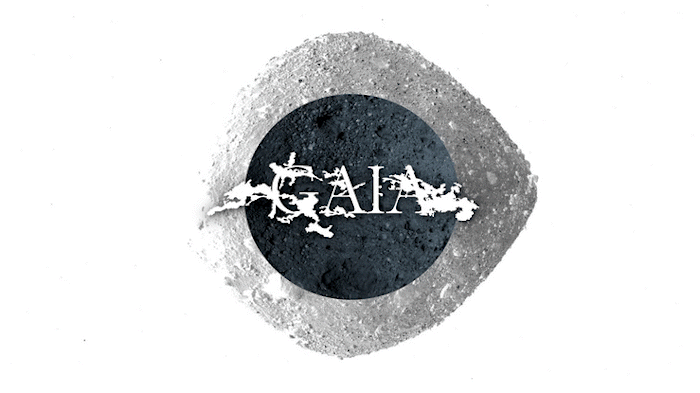
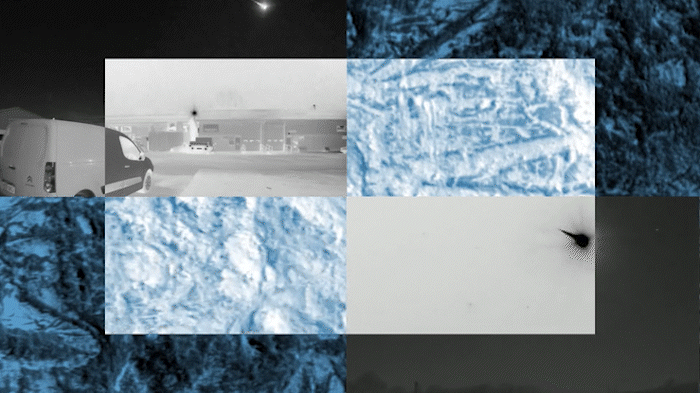
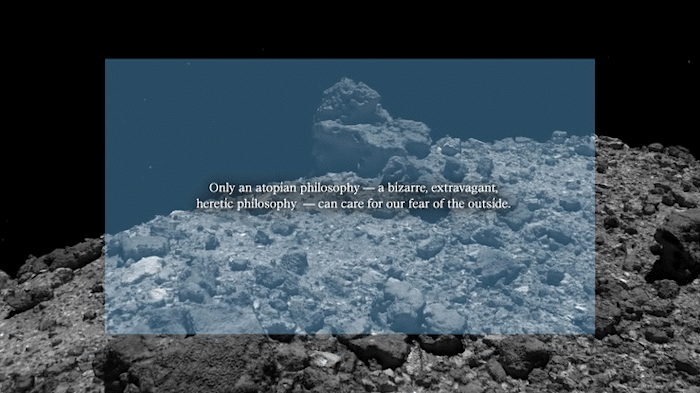





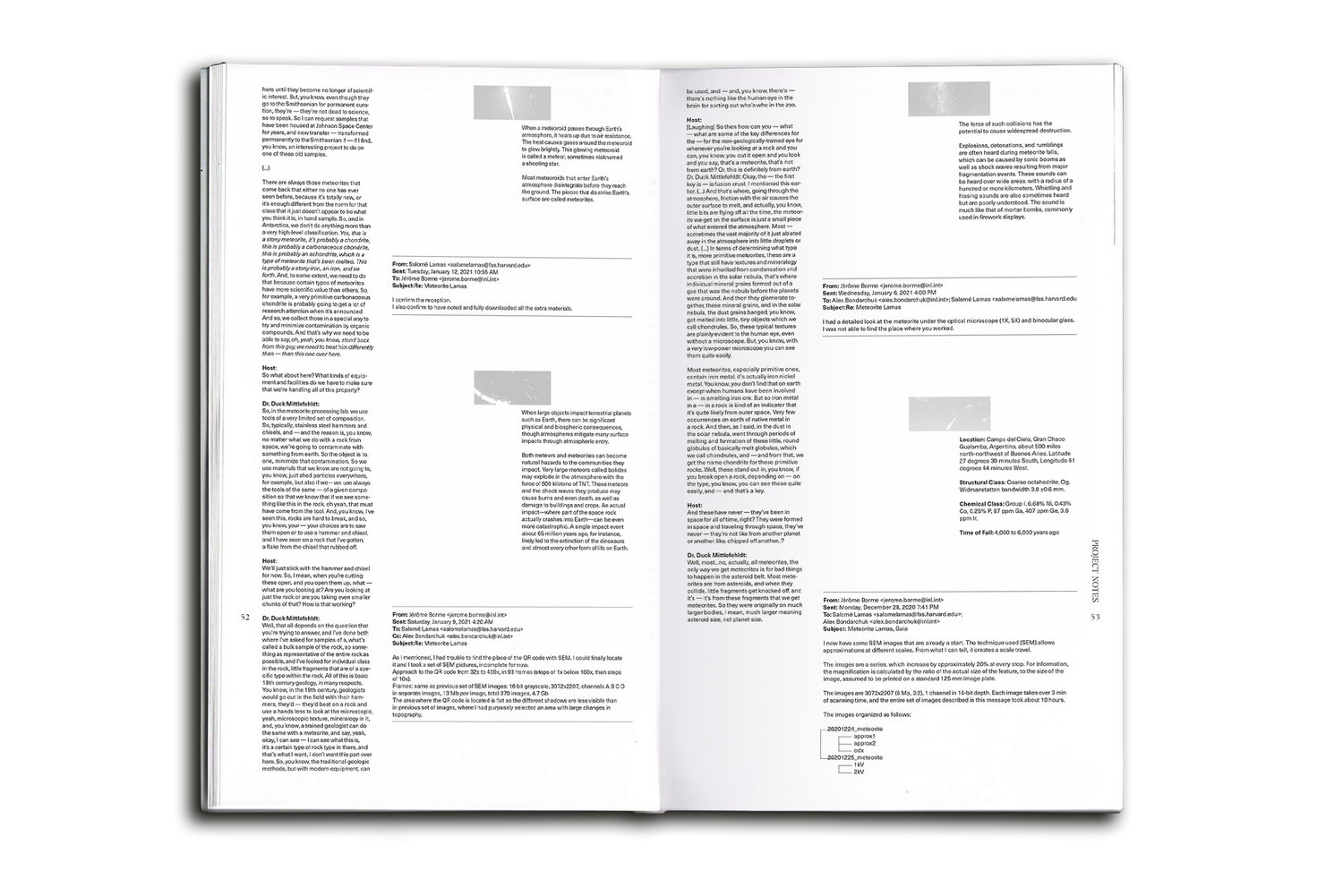

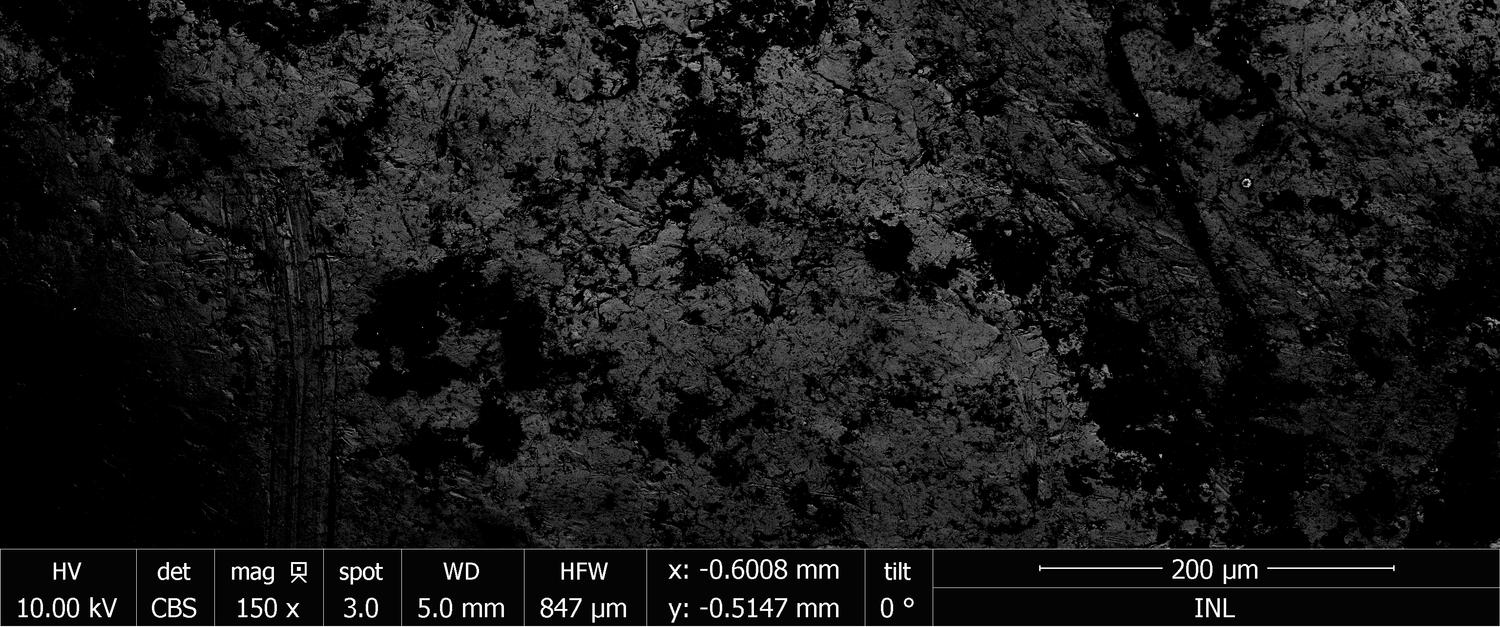
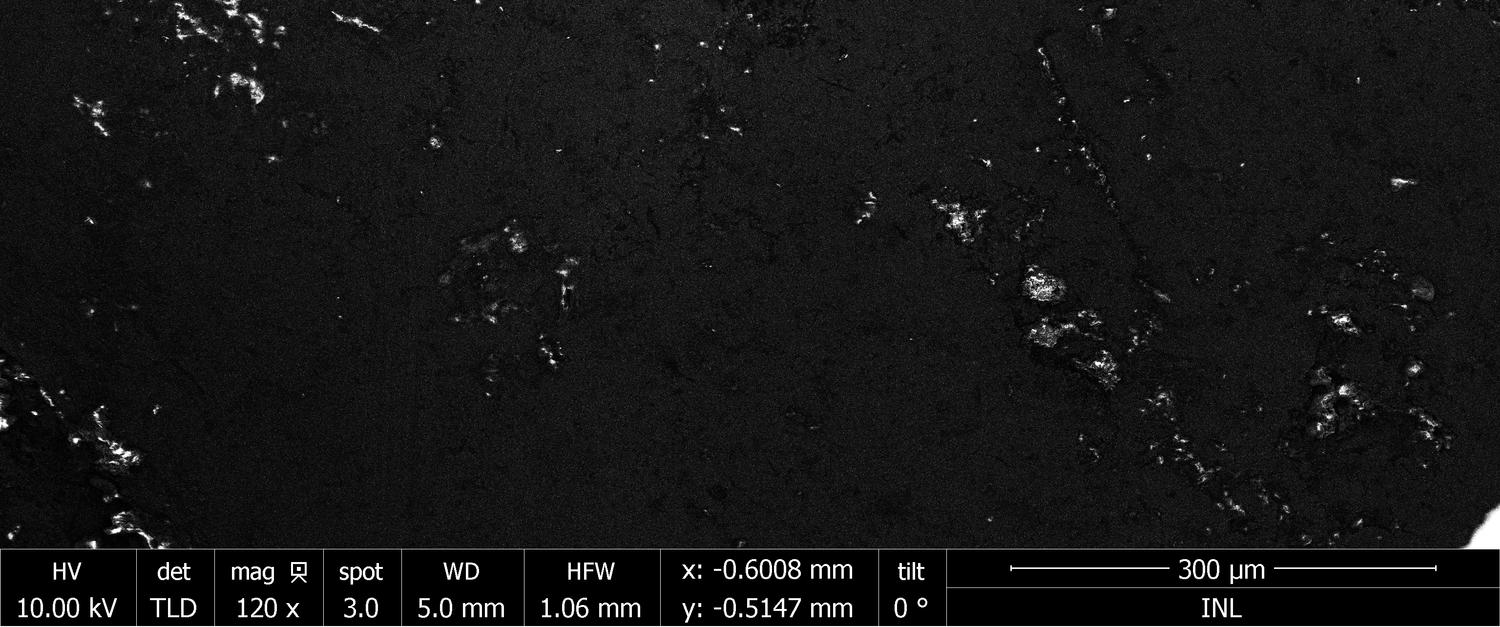



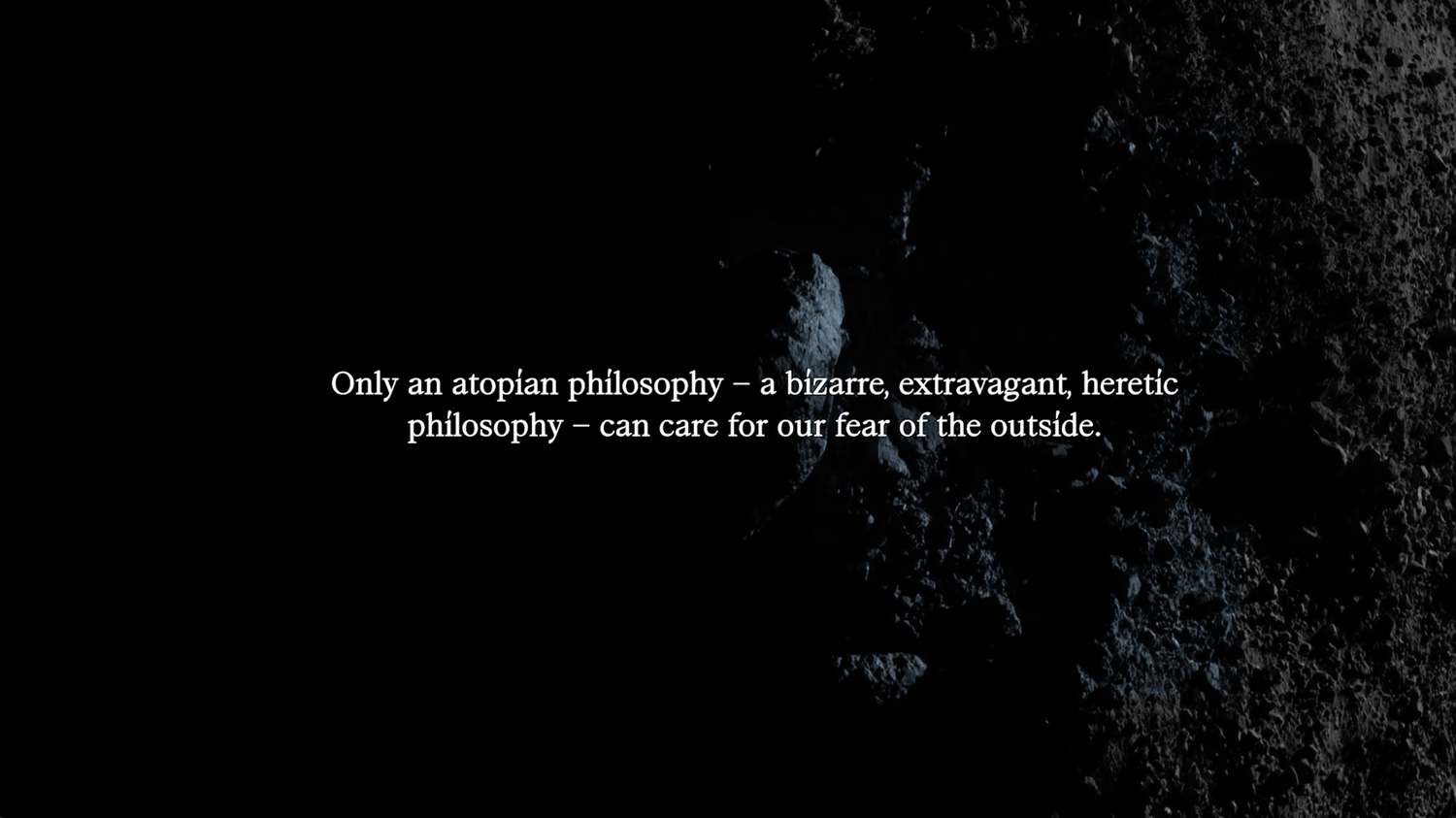

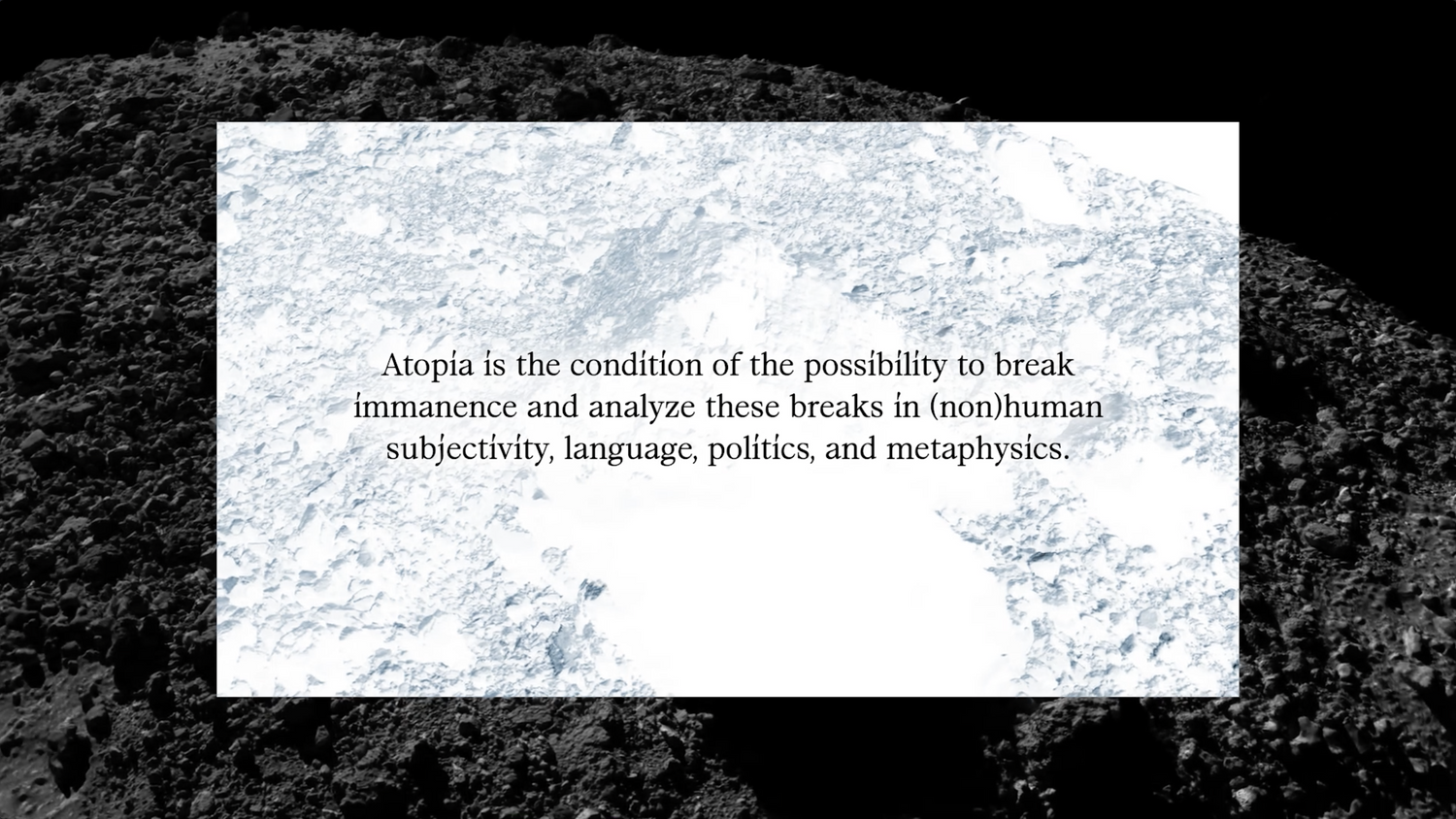
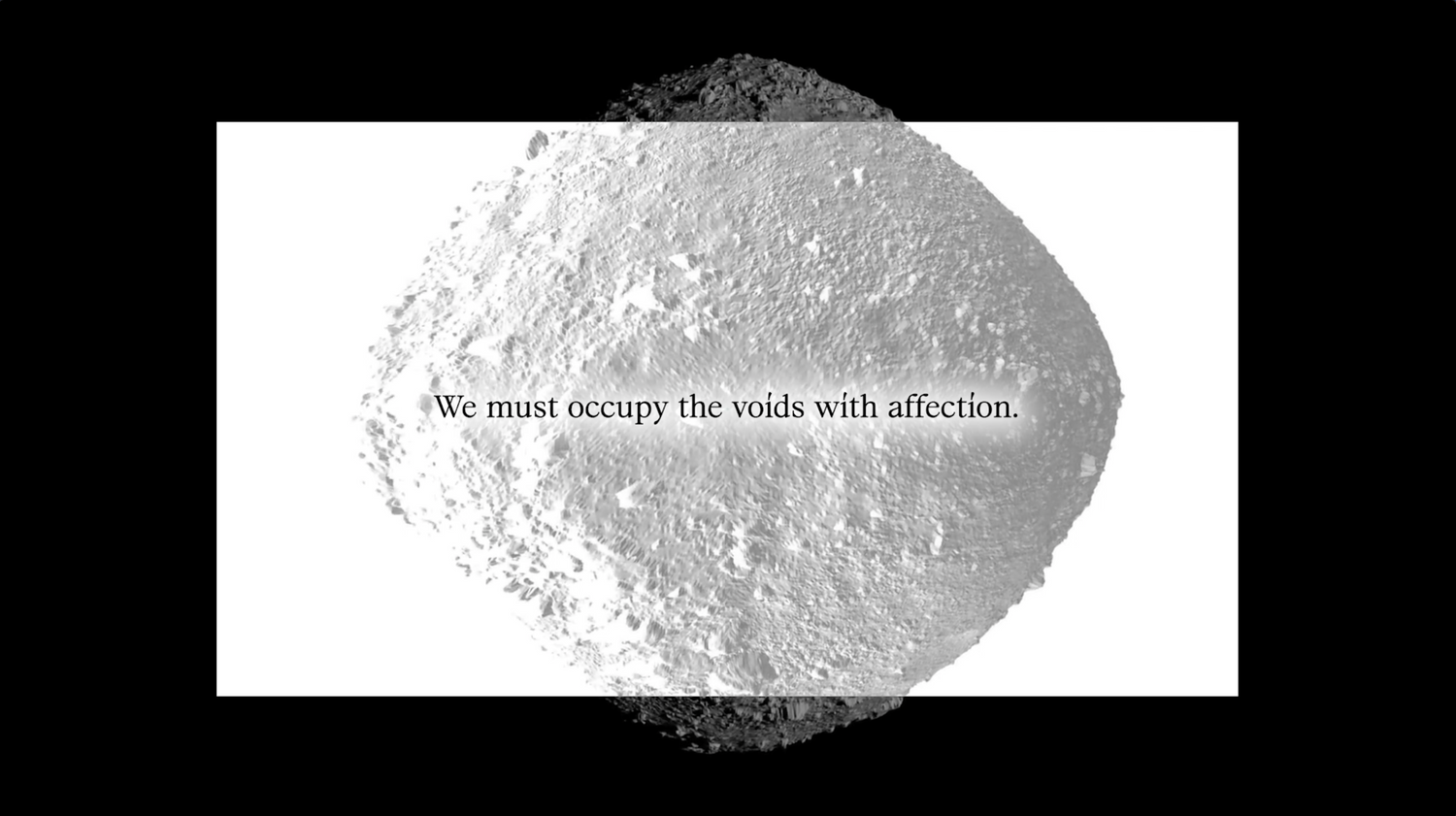


Salomé Lamas’s films employ an ethnographic approach, whether based on storytelling or dramatization, to delve into history and memory. They disrupt the notion of truth and excavate realities underrepresented in the collective unconscious, the media, popular culture, and mythology. Their subject matter may include colonial violence, climate change, war, and global capitalism.
[…]
The film suggests how our understandings of borders, interconnectivity, and affectability communicated by a nonhuman agent, which has traveled from the cosmos, could explain such concepts through different spatial and temporal arrangements and principles. It also points towards how the unlikely connections between pre-Columbian knowledge and capitalist e-platforms evidence how fluctuating temporalities such as Deep Time and rapid, extractive capital can meet through cosmic matter. This film enables Lamas to question the world in which we live through narratives around bodies of rock by tracing mythological, scientific, and aesthetic observations. It also allows Lamas to imagine a relationship between humans and nature that puts nature the center of social life and not at the service of humans.
Miguel Amado, Gaia
Salomé Lamas’s work could be interpreted as a cartography of human activity. Her practice analyzes different social formations, mapping contours, structures, gestures and aspirations.
[...]
It was the reason I inquisitively came across Gaia’s (2021) gravitational center: a meteorite.
As part of a research where humans had regularly defined the coordinates of action, an interest in an extra-human agent surprised me.
The novelty extends to the association of the project between the cosmos and miniaturized technology: how to relate the anonymous and aseptic sphere of outer space and of a nano-technology laboratory with the organic and hyperhuman fictions documented by Lamas so far?
One of the project’s main gestures inscribes a microscopic QR code on the surface of a celestial body. Paradoxically, the cosmic scale of the meteorite finds a parallel in the nanographic dimension of the sculptural record: both are examples of the limits of our perception.
By crossing a cosmic element with an advanced technological process, Gaia suggests a cinematographic and literary genre that inhabits a liminal space-time: science fiction.
This opens the possibility of interpreting Lamas' interest in the non-human as a new mapping of our condition, substituting the supposed distancing by hyper-focusing on the contemporary period.
[...]
In this way, it becomes possible to read the project as an attempt to challenge our way of life, questioning our agency in the illusory reproduction of an understanding of the planet as something infinite and colonizable as well as our responsibility in the moment of crisis we are experiencing. Somewhere between the macro scale of the cosmos and the micro scale of nanography, Gaia reenacts a reformulation of our place in the world, mapping the strange reality to which we belong.
João Laia, Gaia
